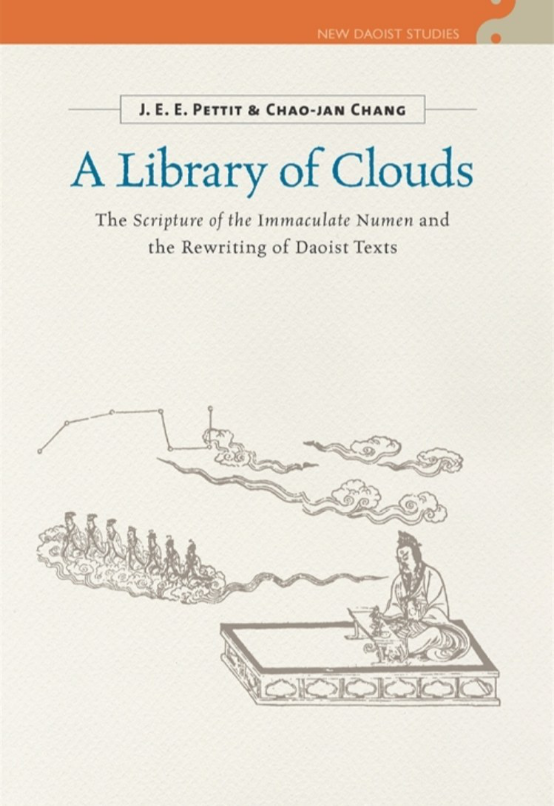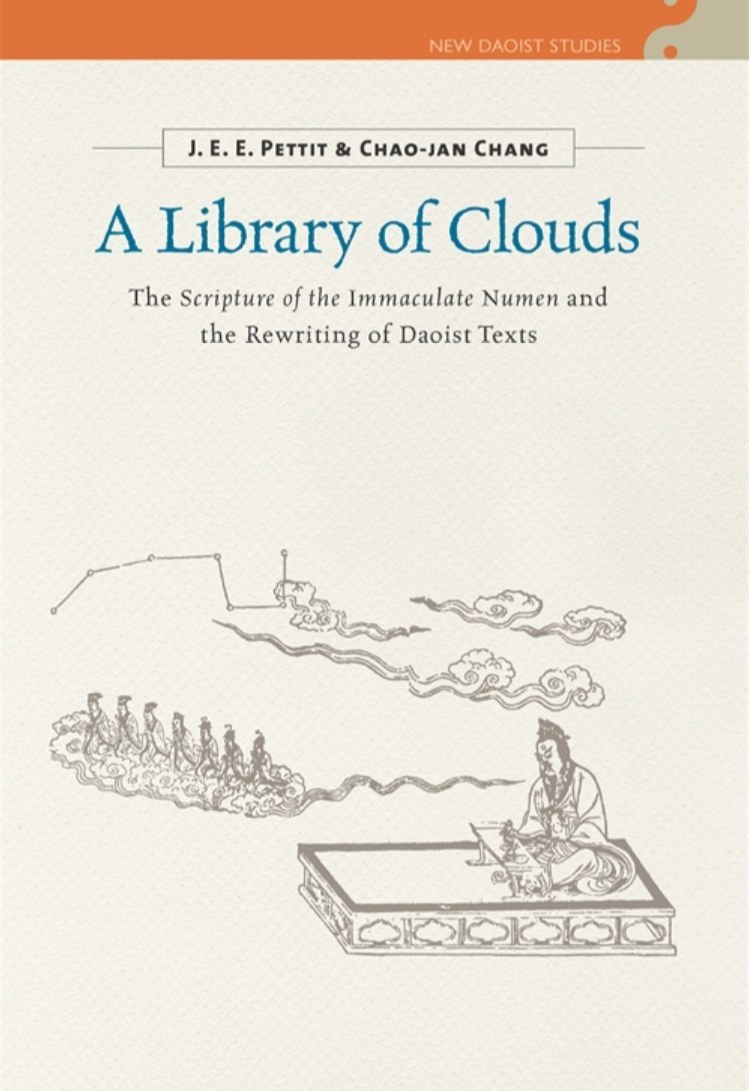
A LIBRARY OF CLOUDS: THE SCRIPTURE OF THE IMMACULATE NUMEN AND THE REWRITING OF DAOIST TEXTS
裴玄錚、張超然:《雲笈:〈素靈經〉與道書的改寫》
J. E. E. Pettit and Chao-jan Chang
Series: New Daoist Studies
出版信息:J. E. E. Pettit and Chao-jan Chang, A Library of Clouds: The Scripture of the Immaculate Numen and the Rewriting of Daoist Texts, Hong Kong: The Chinese University of Hong Kong Press (Honolulu: University of Hawai’i Press), 2020. 376
內容提要
自創教初期,道經作者便宣稱他們是通過仙真的啟示獲得經典。許多時候,這些著作是由不同的通靈者歷經無數夜晚寫作而成。新的啟示經常被倉促地添加上去,以致經文內容顯得參差不齊,也造成了道教文獻總是給人草率且多自相矛盾的印象。
本書便是在這樣的基礎之上,將我們的關懷聚焦在東晉南朝(公元4-5世紀)道教上清經的改寫問題之上。過去,上清道教研究一直是以揭露最初的“真經”作爲主要方向,使得晚出經書不太受到重視,其中便包括“三奇”──中古道教最爲貴重、深奧的經書。過去關於“三奇”的研究不多。本書深入探究“三奇”,期望能夠更好地理解上清崇奉者複製、編輯與改寫經書的方法。我們研究的《素靈經》便是其中的第三部著作。由於這部著作缺乏連貫性結構,許多學者都將其視爲來源不同的許多段落雜揉在一起的結果,而不是一個統一的文本。而經文之中出現的不同撰著者的口吻,也讓人覺得這部作品早已經過後來編輯者的加工與改造。
本書提出一個新的方法,用以理解《素靈經》這類有著複雜編著者的道教文獻。這個方法將使我們邁向文本批評令人振奮的新階段。在這裡,文本是一個流動的、不斷變化的實體,由不斷湧現的作者重新加以形塑。這也突顯出了道教的複雜性,因爲其中有著成千上萬的經書不斷地在流傳,每種文本也都可能擁有許多不同的版本。這樣的現象被理解爲天界經典“翻譯”到人間的過程所造成的“失真”。人類語言無法充分地表達天上的原著。此外,降形於靈媒的天界神靈也可能只是零碎地揭示浩繁卷帙的一小部分。本書的標題“雲端的圖書館”,指的便是這個以拼圖方式傳送的天書存取空間。
我們指出有關《素靈經》寫作的一些線索,以及它在中古道教初期所佔據的地位,以此強調這部著作在理解中古道教初期經書與傳記手稿的寫作、接受以及流傳方式的重要性。將此經典重新放回相關傳記與儀式脈絡之中的方式,指出這類啟示性文獻應被視作一種思想的集錦,一種將先前所流行的概念與信仰重新編織入新經典中的過程。
About the book
From early times, Daoist writers claimed to receive scriptures via revelation from heavenly beings. In numerous cases, these writings were composed over the course of many nights and by different mediums. New revelations were often hastily appended, and the resulting unevenness gave rise to the impression that Daoist texts often appear slapdash and contain contradictions. A Library of Clouds focuses on there-writing of Daoist scriptures in the Upper Clarity (Shangqing) lineage infourth- and fifth-century China. Scholarship on Upper Clarity Daoism has been dominated by attempts to uncover “original” or “authentic” texts, which has resulted in the neglect of later scriptures—including the work fully translated and annotated here, the Scripture of the Immaculate Numen, one of the Three Wonders (sanqi) and among the most prized Daoist texts in medieval China. The scripture’s lack of a coherent structure and its different authorial voices have led many to see it not as a unified work but the creation ofdifferent editors who shaped and reshaped it over time.
About the authors
裴玄錚(J. E. E. Pettit)美國夏威夷大學馬諾阿分校助理教授
張超然(Chao-jan Chang)臺灣輔仁大學宗教學系副教授
Reviews and endorsements
This is a very interesting study and translation of a key Shangqing text. Innovative and important, the work sheds new light on the processes of redaction and composition in medieval Daoism. The basic methodology followed by the authors is textual analysis, inspired to some extent by source criticism developed in Biblical studies. A valuable contribution.
—Mark Meulenbeld, Associate professor, The Hong Kong Polytechnic University
This is the first monograph devoted to the Scripture of the Immaculate Numen, an important text in the medieval Daoist Shangqing corpus. With exceptional dexterity, the authors examine the processes by which this scripture was compiled from earlier Upper Clarity texts, providing us within sights into the origins, redaction, reception, and transmission of Daoist texts. Using inventive methodological approaches and reading strategies, they highlight the complex links between manuscript culture, textual practices, and ritual processes in early medieval China. The book includes a full, annotated translation of the scripture alongside meticulous textual analysis, so it will be useful as a primary source for students as well as specialists seeking new insights into medieval Daoism.
— Gil Raz, Associate professor of Religion, Dartmouth College
返回列表


